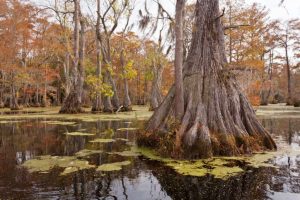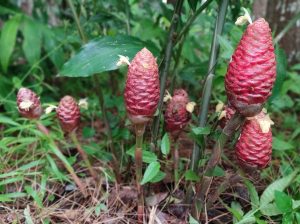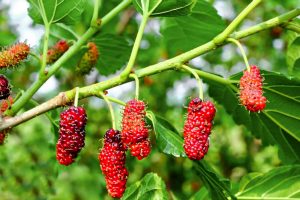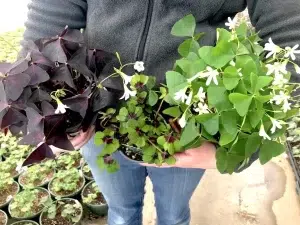Trees that Grow by Water
Understanding the importance of water is critical to our efforts to promote healthy and thriving trees. Trees, like all other beings, require water for survival and growth. In this comprehensive guide, we delve into the complexities of trees that grow by water, their care, and maintenance, with a special emphasis on the critical role water plays in ensuring maximum growth and health.
Characteristics of trees that grow by water
Adaptations: Riparian trees have developed special adaptations to flourish in wet environments. Shallow root systems, buoyant seeds, and flexible stems allow them to withstand water level fluctuations and periodic submersion.
Species Diversity: Many tree species, including willows (Salix spp.), cottonwoods (Populus spp.), alders (Alnus spp.), and sycamores (Platanus spp.), prefer water-rich settings. Each species has unique adaptations tailored to its riparian niche.
Water-dependent Life Cycle: Riparian trees require water for germination, seed distribution, and nutrient intake. Hydrological patterns inextricably tie their life cycles, with floods causing seed dispersal and encouraging seedling establishment.
The importance of riparian trees
Water Quality Improvement: Riparian vegetation acts as a natural filter, trapping sediments and absorbing excess nutrients and pollutants from runoff. This process improves water quality and enhances the health of aquatic ecosystems.
Habitat Provision: Riparian zones serve as vital habitats for a wide array of plant and animal species. Trees growing by water provide food, shelter, and breeding sites for aquatic organisms, amphibians, birds, and mammals.
Types of Trees Typically Grow by Water
Willows (Salix spp)
Willows are deciduous trees or shrubs from the Salix genus, which includes over 400 species worldwide. Slender branches, tiny leaves, and catkins (flower clusters) that emerge in early spring distinguish them.
Willows thrive in damp settings because of their flexible branches, which withstand flooding and fast water currents. Their large root systems help stabilize soil along riverbanks and absorb excess water, reducing erosion.
Willows provide an important ecological role by providing habitat and food for a wide range of wildlife species, including birds, insects, and small mammals. Their leaves and twigs decay quickly, providing the soil with organic materials and sustaining a variety of plant communities.
Cottonwood trees (Populus spp)
Cottonwoods are fast-growing deciduous trees from the genus Populus, which includes various varieties native to North America, Europe, and Asia. Triangular leaves with serrated edges and unusual cotton-like seeds distinguish them.
Cottonwoods thrive in riparian areas with abundant water and fertile soils. Their thick root systems securely bind them to riverbanks, providing stability against flooding and soil erosion.
Cottonwoods help to maintain riparian ecosystem dynamics by providing nesting sites for birds, habitat for aquatic creatures, and food for browsing animals. Their high growth rates allow for the colonization of bare riverbanks and the formation of wooded riparian corridors.
Alders(Alnus spp)
Alders are deciduous trees or shrubs from the genus Alnus and include over 30 species found throughout temperate and subtropical climates worldwide. Their serrated leaves and cone-shaped fruits distinguish them.
Alders are well-suited to wet soils and variable water levels due to their nitrogen-fixing root nodules and tolerance for anaerobic environments. They play an important role in nitrogen cycling and soil enrichment in riparian habitats.
In riparian regions, alders improve soil fertility by fixing nitrogen, which promotes the growth of nitrogen-demanding plants. Their dense foliage offers shade, regulates water temperature, and adds habitat complexity for aquatic creatures.
Sycamore (Platanus spp)
Sycamores, sometimes known as plane trees, are members of the Platanus genus, which includes many species native to North America, Europe, and Asia. They’re huge deciduous trees with characteristic mottled bark and palmate foliage.
Sycamores like moist, well-drained soils near bodies of water, where they can reach spectacular heights and form extensive root systems. Their thick bark keeps them safe from physical harm and temperature variations.
Sycamores provide habitat for cavity-nesting birds, roosting areas for bats, and food for a wide range of animal species. Their shade tolerance and quick growth make them vital components of riparian forests, helping to maintain ecosystem resilience and biodiversity.
Red maple(Acer rubrum)
Eastern North America is home to the Red Maple (Acer rubrum), also referred to as swamp maple, a deciduous tree. Its vivid red color in the autumn and its adaptability to a variety of soil types, including marshes and riparian environments, distinguish it.
Red maple tolerates damp soils and recurrent flooding, making it ideal for riparian settings. Its shallow, fibrous root system lets it easily access water and nutrients, and its flexible branches can tolerate water flow and wind.
Red maple trees offer habitat and food for various animals, including birds, mammals, and insects. Some bird species eat its seeds, and its flowers attract pollinators in the spring. Red maple aids in soil stabilization and erosion management around waterways.
Black Willow (Salix nigra)
This deciduous tree is endemic to eastern North America and thrives in wetland and riparian habitats. Its narrow, lance-shaped leaves and slender branches set it apart.
Black willow thrives in saturated soils and floods, frequently growing along riverbanks, streams, and ponds. Its flexible branches and high growth rate allow it to colonize virgin soil and stabilize eroding riverbanks.
Black willow offers nesting habitat for birds, roosting areas for bats, and food for beavers and other herbivores. Its broad root system improves soil structure, decreases erosion, and increases nutrient cycling in riparian habitats.
River Birch (Betula nigra)
River birch is a deciduous tree endemic to eastern North America that thrives in riparian environments, swamps, and floodplains. It is famous for its unusual peeling bark, which reveals colors of cinnamon, cream, and salmon.
River birch grows in moist wet soils and can withstand occasional flooding and water level fluctuations. Its shallow, spreading root structure stabilizes soil around waterways and anchors on saturated surfaces.
River birch supports a wide range of animals, including birds, mammals, and amphibians, by providing refuge, nesting locations, and food resources. Birds and small mammals eat its seeds, which helps to maintain local biodiversity.
Challenges and Conservation
Human Impacts: Riparian habitats are under threat from urbanization, agricultural runoff, dam development, and exotic species. Human activities can degrade riparian habitats, resulting in biodiversity loss and ecological imbalances.
Restoration Efforts: Conservation projects seek to restore and safeguard riparian regions through habitat restoration, replanting, and sustainable land management. These initiatives aim to preserve riparian biodiversity, improve ecological resilience, and encourage community participation in stewardship activities.
Related Posts:
Management Strategies
Riparian Buffer Zones: Creating riparian buffer zones along waterways proactively preserves riparian trees and protects water resources. These planted strips function as natural buffers, filtering pollutants, lowering runoff, and providing wildlife habitat.
Native Plant Restoration: Replanting riparian regions with native tree species improves ecosystem resilience and biodiversity. Native plants are well-adapted to local conditions and support indigenous wildlife populations, hence promoting ecosystem stability.
Hydrological Restoration: Projects that imitate natural flood regimes can help improve the health of riparian ecosystems. Levee setback, channel reconnection, and floodplain replanting are all strategies that help to restore hydrological connections and ecological variety.
FAQs
How do trees that grow by water adapt to their surroundings?
Riparian trees have unusual characteristics, such as shallow root systems, buoyant seeds, and flexible stems, which allow them to endure fluctuations in water levels and periodic submersion.
What are the benefits of water-grown trees?
Trees that grow near water help to minimize erosion, improve water quality, provide habitat, and conserve biodiversity in riparian habitats.
How do I care for trees that grow by water?
Riparian trees require proper management, including adequate water supply, soil moisture monitoring, invasive species control, and habitat restoration methods.
Are there any problems with water-grown trees?
Yes, urbanization, invasive species encroachment, water scarcity, and pollution endanger riparian ecosystems and the trees that live in them.
How can I help preserve water-grown trees?
You may help riparian conservation initiatives by sponsoring habitat restoration projects, volunteering at tree planting events, conserving water, and campaigning for riparian protection regulations.
Conclusion
Trees that grow by water also known as riparian trees, play critical roles in the health and sustainability of aquatic environments. These trees help maintain the biological balance of riparian areas by stabilizing soil and preventing erosion providing a home for fauna. Each species, whether the flexible willow, the towering cottonwood, or the hardy alder, has developed unique tactics for thriving in water-rich environments. Arborists and conservationists can better manage and protect riparian trees by studying their traits and ecological services.





